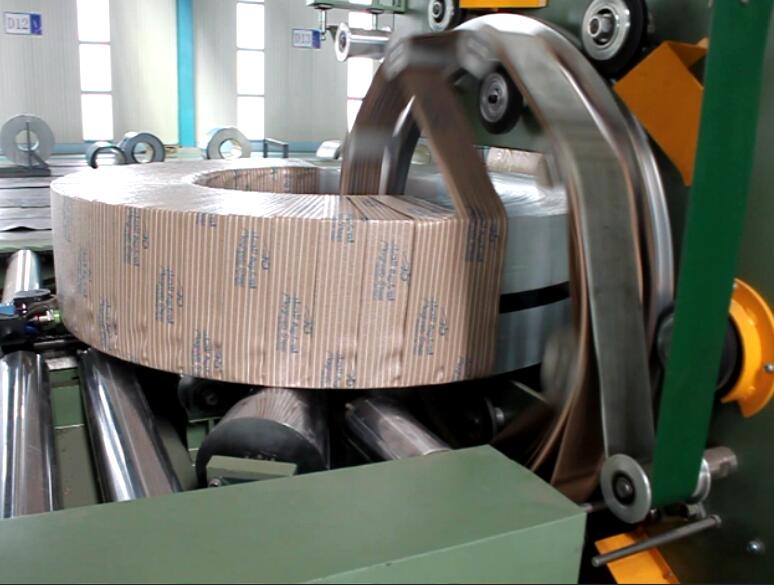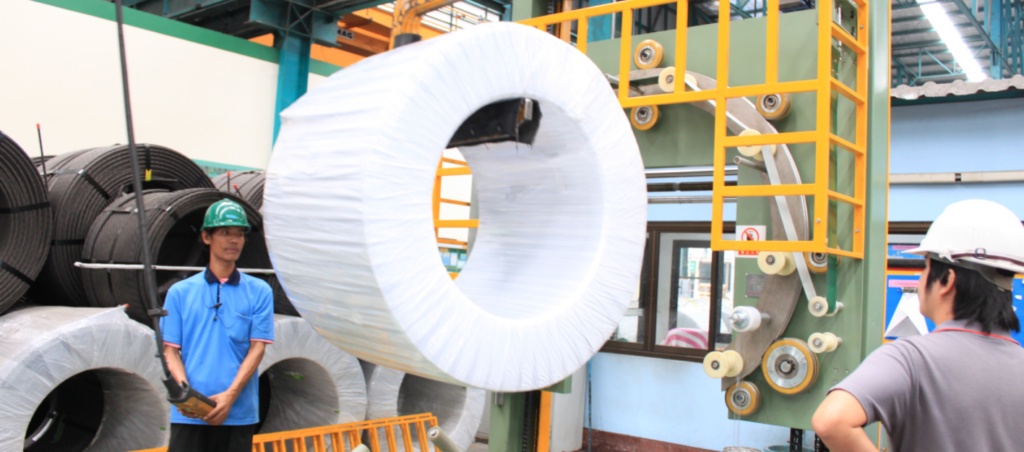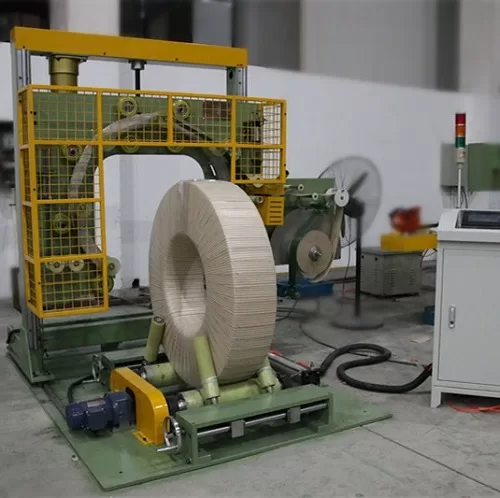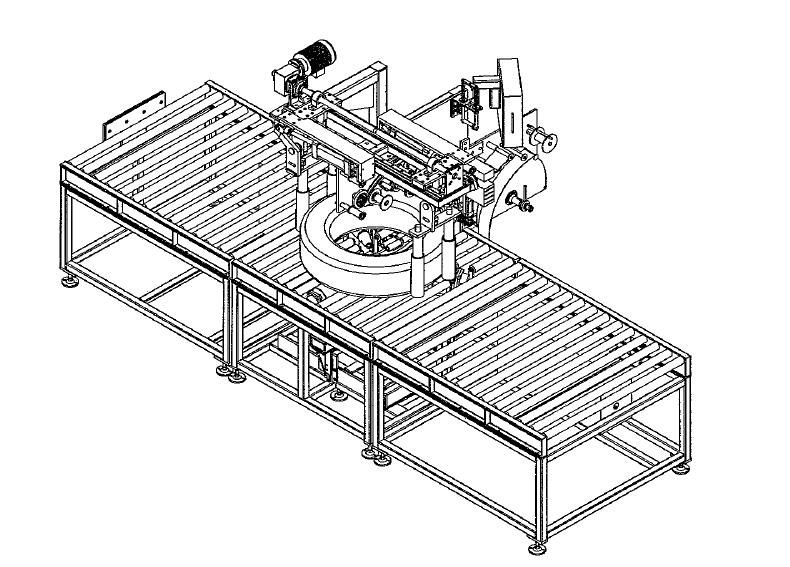
View an example of an automated coil wrapping machine used in steel coil packaging.
Best Practices for Steel Coil Handling: From Packaging to Storage
Steel coils are fundamental components in industries ranging from automotive manufacturing to construction. These large, heavy rolls represent significant investments in material and production resources. However, their journey from the mill to the final point of use is susceptible to damage. Improper **steel coil handling** at any stage—packaging, transportation, or storage—can lead to surface defects, deformation, corrosion, and ultimately, substantial financial losses and production delays. This guide outlines essential practices for minimizing the risk of damage throughout the steel coil lifecycle.
Why Prioritizing Proper Steel Coil Handling is Crucial
Effective **steel coil damage prevention** is not merely about protecting the material's value; it's integral to operational efficiency and safety. Damage to a single coil can trigger a cascade of negative consequences, including:
- Increased operational costs: Resulting from material replacement, rework, or disposal.
- Production schedule disruptions: Leading to delays in manufacturing and unmet deadlines.
- Safety risks: Damaged or improperly secured coils can pose hazards to personnel during handling and storage.
- Compromised end-product quality: Defects in the coil can translate to flaws in the final manufactured goods.
- Material waste: Contributing to resource inefficiency and increased environmental impact.
Understanding these risks underscores the importance of implementing rigorous handling protocols at every step.
Navigating the Steel Coil Supply Chain: Key Stages
1. Mill Production and Initial Coil Packaging
The process begins at the steel mill. Post-production, **coil packaging** is the first critical step in protection. Standard procedures often include:
- Application of rust-inhibiting oils or Volatile Corrosion Inhibitor (VCI) coatings.
- Wrapping the coil with protective materials like VCI paper, stretch film, or waterproof barriers.
- Securing the coil using steel or high-tensile plastic strapping.
- Applying inner diameter (ID) and outer diameter (OD) protectors to prevent damage during handling.
This initial layer of protection is vital for mitigating corrosion and physical damage during subsequent handling and transit.
2. Coil Transportation: Mill to Warehouse or Processing
Transporting heavy steel coils via truck, rail, or ship requires meticulous planning and execution. **Coil transportation** risks include shifting, impact damage, and exposure to environmental elements. Essential considerations are:
- Utilizing specialized transport vehicles (e.g., coil cars for rail, cradled flatbed trailers for trucks).
- Employing correct loading patterns (e.g., "eye-to-the-sky" or "eye-to-the-side") based on coil type and transport mode.
- Implementing robust securing methods using chains, straps, chocks, and blocking/bracing materials compliant with transport regulations.
- Using tarps or covered transport to shield coils from weather.
3. Warehouse Receiving and Unloading Procedures
Upon arrival, the unloading process demands careful coordination and appropriate equipment. **Warehouse staff** must adhere to strict protocols:
- Using designated **coil lifting equipment** (e.g., overhead cranes with C-hooks, coil grabs, or specialized forklift attachments).
- Inspecting coils immediately upon receipt for any signs of transit damage (dents, edge damage, wrapper tears, rust).
- Accurately documenting the condition, weight, and identification of received coils.
- Following safe unloading procedures to prevent personnel injury and equipment damage.
4. Effective Coil Storage Solutions
Proper **warehouse coil storage** is essential for maintaining coil integrity over time. Best practices include:
- Storing coils in designated, dry, and preferably climate-controlled areas to prevent condensation and corrosion.
- Using appropriate storage methods: floor storage with dunnage (e.g., wood blocks, rubber pads), saddle systems, or specialized coil racking systems.
- Avoiding stacking coils directly on top of each other unless specifically designed for it, to prevent deformation.
- Maintaining adequate spacing between coils for inspection and handling access.
- Implementing a First-In, First-Out (FIFO) inventory system.
5. Handling for Further Processing or Shipment
Moving coils from storage to processing lines or preparing them for final shipment requires continued diligence. This phase may involve:
- Careful retrieval from storage using appropriate lifting devices.
- Potential repackaging or supplementing existing **coil protection** based on destination requirements.
- Safe loading onto processing equipment (e.g., uncoilers, slitters).
- Secure loading onto vehicles for final delivery, repeating the safety checks used during initial transport.

Key Strategies for Effective Steel Coil Damage Prevention
Building on the understanding of the coil journey, here are specific strategies to mitigate damage risks:
Optimal Coil Packaging Techniques
Robust packaging forms the primary defense against physical damage and corrosion:
- Material Selection: Choose high-strength, tear-resistant wrapping materials (e.g., reinforced paper, poly-woven fabric, heavy-gauge stretch film) appropriate for the coil type and transit conditions. Incorporate VCI materials for corrosion protection, especially for bare steel or long-term storage.
- Edge Protection: Utilize durable edge protectors (metal, high-density plastic, or fiberboard) on both ID and OD edges, which are highly susceptible to impact damage.
- Banding Practices: Apply strapping securely without over-tightening, which can cause edge crimping or coil distortion. Use protectors under straps at contact points. Ensure the number and placement of bands are sufficient for coil weight and stability.
- Climate Considerations: For humid or marine environments, enhance packaging with desiccants and ensure complete sealing of moisture barriers.
Safe Coil Transportation Practices
Minimizing risks during transit involves careful planning and execution:
- Vehicle Suitability: Always use transport vehicles equipped with appropriate coil cradles or fixtures designed to prevent rolling or shifting.
- Loading Procedures: Train personnel on correct loading techniques specific to the coil orientation (eye-to-sky, eye-to-side) and vehicle type. Ensure even weight distribution.
- Securement: Adhere strictly to transportation regulations (e.g., FMCSA guidelines in the US) for securing heavy coils. Use an adequate number of high-strength chains or straps, properly tensioned and attached to designated anchor points. Employ blocking and bracing to prevent any movement.
- Route Planning: Where possible, select routes that minimize rough roads, steep gradients, and adverse weather exposure.
Warehouse Coil Storage Best Practices
Effective **coil storage solutions** preserve material quality:
- Environment Control: Maintain a clean, dry storage environment. Monitor humidity levels and use dehumidifiers if necessary, especially for bare or galvanized coils. Avoid storing coils directly on concrete floors which can wick moisture.
- Storage Systems: Utilize appropriate storage methods. Dunnage should elevate coils off the floor and provide stable support. Coil saddles or contoured blocks offer better support than flat dunnage. Cantilever or specialized coil racking systems offer vertical storage efficiency and protection.
- Inventory Management: Implement a clear inventory system (e.g., FIFO) to minimize storage duration. Conduct regular visual inspections of stored coils for signs of rust, wrapper damage, or physical distortion.
- Personnel Training: Ensure all warehouse staff understand the specific requirements for safe **steel coil storage** and handling within the facility.
Appropriate Handling Equipment and Techniques
Using the right **coil lifting** equipment correctly is paramount:
- Equipment Selection: Employ specialized lifting devices designed for coils, such as:
- **C-hooks:** Suitable for eye-horizontal lifting, ensure hook size matches coil ID and width.
- **Coil Grabs/Tongs:** Mechanical or hydraulic grabs that grip the coil OD or ID. Ensure proper contact pad material (e.g., urethane) to prevent surface damage.
- **Lifting Magnets:** Effective for specific coil types, ensure adequate capacity and safety features (e.g., battery backup).
- **Forklift Attachments:** Coil rams or specialized attachments require careful operation to avoid damaging inner wraps.
- Lifting Procedures: Train operators on smooth, controlled movements. Avoid sudden starts, stops, or impacts. Ensure lifts are balanced and secure before moving. Never lift coils by their banding straps.
- Equipment Maintenance: Regularly inspect and maintain all lifting devices, cranes, and forklifts according to manufacturer recommendations and safety standards (e.g., OSHA, ASME). Address wear and tear on contact surfaces (pads, hooks) promptly.
Implementing Robust Quality Control and Inspection
Consistent inspection processes identify potential issues early:
- Receiving Inspection: Establish clear criteria for inspecting incoming coils. Document any damage with photographs and detailed notes.
- In-Storage Checks: Periodically inspect stored inventory, particularly coils stored for longer durations or in less-than-ideal conditions. Check for wrapper integrity, signs of moisture ingress, or rust formation.
- Pre-Shipment/Processing Inspection: Conduct a final quality check before a coil is shipped to a customer or moved to a processing line.

Leveraging Technology in Steel Coil Handling
Technological advancements offer new opportunities to enhance **safe coil handling** and protection:
Automated Guided Vehicles (AGVs) and Handling Systems
**Automation** can significantly improve consistency and reduce handling errors:
- Automated cranes and AGVs designed for coil transport within facilities can provide gentle, precise handling.
- Robotic packaging systems ensure consistent application of protective wraps and banding.
- While requiring initial investment, automation can lead to long-term reductions in damage rates and labor costs.
Sensor Technology and IoT Integration
Sensors provide valuable data for monitoring coil condition and handling:
- Environmental Sensors: Monitor temperature and humidity within storage areas or during transit, triggering alerts if conditions exceed safe thresholds.
- Impact Recorders: Devices attached to coils or transport can log excessive shocks or impacts, helping to pinpoint where mishandling occurred.
- Tracking Systems: RFID tags or GPS trackers allow real-time visibility of coil location throughout the supply chain.
Advanced Packaging Materials Development
Ongoing innovation yields improved **coil protection** materials:
- Enhanced VCI formulations offering longer-lasting or more potent corrosion inhibition.
- Stronger, lighter-weight wrapping materials with improved puncture and tear resistance.
- Development of more sustainable and recyclable packaging options without compromising protection.
The Indispensable Role of Training and Safety Culture
Despite technological aids, human operators remain central to preventing **steel coil damage**. A well-trained workforce and a strong safety culture are essential.
Comprehensive Training Programs
Effective training should be standardized and ongoing:
- Role-Specific Training: Tailor training content to specific job functions (e.g., crane operators, forklift drivers, loaders, warehouse personnel).
- Hands-On Practice: Combine classroom instruction with practical, supervised training on correct handling techniques and equipment operation.
- Regular Refreshers: Conduct periodic refresher courses to reinforce best practices and introduce any new procedures or equipment.
- Safety Focus: Emphasize hazard recognition and safe operating procedures to prevent both material damage and personnel injuries.
Fostering a Culture of Care and Accountability
Management commitment is key to building a culture where careful handling is the norm:
- Clear Expectations: Communicate the importance of damage prevention and establish clear standards for coil handling.
- Incident Reporting and Analysis: Encourage reporting of all damage incidents and near-misses without blame. Analyze root causes to implement corrective actions.
- Feedback Mechanisms: Create channels for employees to suggest improvements to handling processes based on their experience.
- Recognition: Acknowledge teams and individuals who consistently demonstrate excellence in safe and careful coil handling.
Conclusion: Implementing a Holistic Strategy for Steel Coil Protection
Safeguarding steel coils against damage requires a comprehensive, integrated strategy that addresses every touchpoint in the supply chain. Effective **coil packaging**, adherence to **safe coil transportation** protocols, optimized **warehouse coil storage**, and the correct use of **coil lifting** equipment are all critical components.
Furthermore, leveraging appropriate technologies, investing in continuous personnel training, and fostering a strong safety culture are essential for minimizing risks. By adopting these best practices, businesses can significantly reduce material losses, enhance operational efficiency, ensure worker safety, and maintain the high quality standards expected by customers.
Ultimately, meticulous **steel coil handling** is not just an operational necessity but a strategic advantage, contributing to reduced costs, improved customer satisfaction, and a stronger reputation within the industry.
